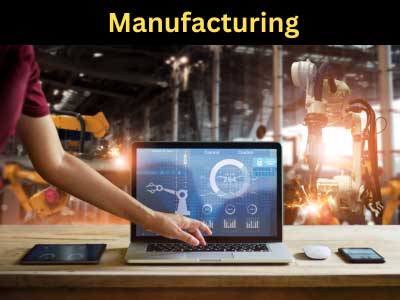What Is Another Name For Additive Manufacturing?
Key Takeaway
Another name for additive manufacturing is 3D printing. This term is widely used because it describes the process of creating three-dimensional objects layer by layer from digital models. Another common term is rapid prototyping, which emphasizes the technology’s ability to quickly produce prototypes for testing and development.
Layered manufacturing is also used to describe this process, highlighting the method of building objects one layer at a time. These alternate names reflect the diverse applications and benefits of additive manufacturing, such as customization, reduced waste, and the ability to create complex geometries. These terms help convey the technology’s versatility and importance in various industries.
3D Printing
One of the most common alternative names for additive manufacturing is 3D printing. This term is widely recognized and often used interchangeably with additive manufacturing. The process involves creating three-dimensional objects from a digital file by layering material until the final shape is achieved. The term “3D printing” originated from early consumer-grade machines that could “print” objects from plastics, similar to how inkjet printers lay down ink on paper.
The popularity of the term 3D printing has grown significantly due to its user-friendly appeal. It’s easy to understand and immediately conjures an image of building something layer by layer. This accessibility has helped the technology gain widespread acceptance not only in industrial settings but also among hobbyists and educators. As a new engineer, you’ll likely encounter this term frequently, especially when discussing desktop machines and consumer applications.

Rapid Prototyping
Another name you might come across is rapid prototyping. This term highlights one of the primary uses of additive manufacturing – the fast creation of prototypes. Before the advent of additive manufacturing, developing a prototype was a time-consuming and expensive process. Engineers had to use traditional manufacturing techniques, which often involved creating molds or machining parts, both of which took a considerable amount of time and resources.
Rapid prototyping revolutionized this process by allowing engineers to quickly produce physical models of their designs directly from digital files. This speed is crucial in the development phase, as it allows for rapid iteration and testing. Engineers can quickly identify flaws, make adjustments, and print new versions, significantly reducing the time from concept to final product. This term is particularly relevant in industries where fast-paced innovation is essential, such as automotive and aerospace.
Layered Manufacturing
Layered manufacturing is another term that describes the additive manufacturing process. This name emphasizes the method of constructing an object layer by layer. Each layer is a thin cross-section of the final product, and these layers are sequentially added until the entire object is complete. This approach contrasts sharply with traditional subtractive manufacturing, where material is removed from a solid block to create the final shape.
Layered manufacturing offers several advantages, particularly in terms of design freedom. Complex geometries, internal structures, and intricate details that would be difficult or impossible to achieve with subtractive methods can be easily created. This method is highly efficient in terms of material usage, as it only uses the necessary amount of material to build the object. Understanding this term will help you appreciate the technological advancements and the creative possibilities that additive manufacturing brings to various industries.
Benefits of Alternate Names
Using different names for additive manufacturing helps highlight various aspects and benefits of the technology. For instance, the term “3D printing” makes the concept more approachable and understandable for the general public. It helps demystify the technology and makes it more accessible, fostering greater interest and adoption across different fields, from education to consumer products.
On the other hand, terms like “rapid prototyping” and “layered manufacturing” emphasize the practical and technical advantages of the process. Rapid prototyping underscores the speed and efficiency in developing prototypes, crucial for industries that require quick iterations. Layered manufacturing highlights the precision and material efficiency, showcasing the method’s capability to produce complex and highly detailed structures. By understanding these terms, you can better communicate the diverse applications and benefits of additive manufacturing to different audiences.
Applications and Examples
Additive manufacturing, under its various names, finds applications across a multitude of industries. In aerospace, 3D printing is used to create lightweight, complex parts that enhance performance and reduce fuel consumption. For example, GE Aviation uses additive manufacturing to produce fuel nozzles that are lighter and more durable than those made with traditional methods.
In healthcare, rapid prototyping enables the creation of custom implants and prosthetics tailored to individual patients. Surgeons can use 3D printed models of a patient’s anatomy to plan complex surgeries, improving outcomes and reducing operating times. Companies like Align Technology utilize 3D printing to produce custom orthodontic aligners, demonstrating the technology’s potential for personalized healthcare solutions.
In the automotive industry, layered manufacturing is employed to produce parts with intricate designs that would be challenging to achieve with conventional techniques. This allows for greater innovation in vehicle design and performance. For instance, car manufacturers like BMW and Ford use additive manufacturing for both prototyping and producing final parts, showcasing the technology’s versatility and efficiency.
Conclusion
Understanding the various names for additive manufacturing – 3D printing, rapid prototyping, and layered manufacturing – provides a comprehensive view of this transformative technology. Each term highlights different aspects and benefits, from accessibility and speed to precision and material efficiency.
As an engineer entering the industry, grasping these concepts is crucial. It not only aids in better communication with colleagues and clients but also enhances your ability to leverage this technology effectively in your projects. The diverse applications across industries demonstrate additive manufacturing’s potential to drive innovation, improve efficiency, and create customized solutions that were previously unattainable. Embracing these alternate names and the principles they represent will equip you with the knowledge and skills needed to excel in the rapidly evolving field of manufacturing.
